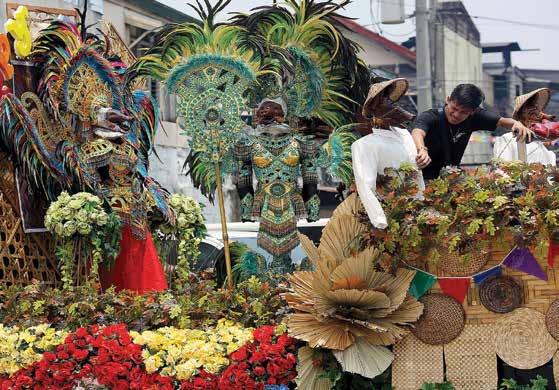
1 minute read
‘We adapt or we suffer...
repeatedly issued reminders to various government agencies to intensify climate change planning and programming.
The inclusion of the climate agenda in the PDP was also proof of the government's ramped up efforts to combat global warming. The program is anchored on three main strategies: increasing climate and disaster risk resilience of communities and institutions; enhancing ecosystem resilience; and enabling transition to a lowcarbon economy. "As the 'climate bank' of the Asia and the Pacific, the ADB has proven its reliability in extending strategic financing and technical assistance for climate-responsive projects," the president said.
Advertisement
He added his administration has strategically integrated the climate agenda into its plan, boosting annual public infrastructure spending to 6 percent of the gross domestic product (GDP), consistent with its Build Better More agenda. The government aims to incorporate the elements of sustainability, climate resilience and disaster-proofing in all phases of societal and infrastructural planning, design and construction, up to operation and maintenance.
"It will be implemented in our water sector, in our sanitation, energy and transportation systems, including agriculture and food production, and many other essential areas. Climate change will be the lodestar for our integral national policies and investment decisions," Marcos explained.
The ADB has extended developmental assistance programs for decades.
Marcos said that in his ninemonth tenure, three strategic programs were signed with the ADB, and there are "many more" in the pipeline, all calculated to strongly support the pursuit of high-priority developmental goals.
The Marcos administration is awaiting the release of the Country Partnership Strategy for 2024-2029, which shall clearly spell out the ADB's recommended medium-term development agenda for the Philippines.
It is guided by the theme, "Investing in Climate, Filipinos and the Future," consistent with the Philippine Development Plan.
The ADB was the Philippines' top source of Official Development Assistance (ODA) among 20 development partners in 2022, accounting for 34 percent ($10.74 billion for 31 loans and 28 grants) of the $31.95 billion of the total active ODA.
From 2010 to 2022, ADB's annual loan financing for the Philippines averaged at $1.4 billion.
Three loans amounting to $1.10 billion were signed with the Bank in the first nine months of the Marcos administration.
The additional loan assistance in the pipeline amounting to $11.55 billion for 2023-2025 is for the Davao Public Transport Modernization Project ($1.07 billion), Malolos-Clark Railway Project Tranche 2 ($1 billion) and South Commuter Railway Project Tranche 2 ($1.75 billion). g








